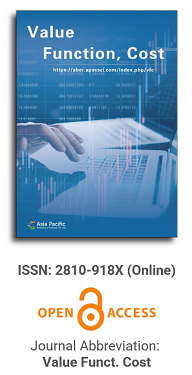
Asia Pacific Academy of Science Pte. Ltd. (APACSCI) specializes in international journal publishing. APACSCI adopts the open access publishing model and provides an important communication bridge for academic groups whose interest fields include engineering, technology, medicine, computer, mathematics, agriculture and forestry, and environment.
Study on Ecological Restoration of Arid City under Land Spatial Planning System: A Case Study of Lanzhou
Vol 4, Issue 1, 2024
Download PDF
Abstract
Due to the rapid development of cities and the acceleration of urbanization in recent years, various policies and plans have been issued one after another. However, many plans are not coordinated and unified, which leads to the imbalance of urban development. Therefore, urban and rural planning begins to transform to land and space planning. The new land space planning system has made a series of important instructions for urban restoration and urban ecological restoration. The “double repair” of the city has become an urgent problem to be solved. At the same time, the “double evaluation” system is used to measure the current situation of urban development. This paper deeply explores the ecological restoration of arid city under the land space planning system of Lanzhou as an example. Through the ecological restoration concept put forward under the land space planning system, at the same time, learning from the new evaluation system, it puts forward new solutions for the urban ecological restoration of Lanzhou. From the perspective of sustainable development, the mode of urban ecological restoration in Lanzhou is deeply optimized, and the new direction of urban development in Lanzhou is deeply adjusted from three aspects of mountain, water and urban overall development.
Keywords
References
- Tang Dongfang. Study on Urban-Rural Integration of Employment[D]. South China Normal University, 2002.
- Huang Jinchuan, Lin Haoxi, Qi Xiaoxia. The type zoning of Beijing-Tianjin-Hebei synergistic development under the perspective of spatial management [J]. Progress in Geographic Science, 2017, 36(01):46-57.
- Jiang Xiaojuan. Research on Land Space Optimization Based on Ecological Civilization Construction[D]. Lanzhou University, 2019
- China Urban Planning Network. Unified Planning System to Better Play the National Development Planning Strategic Orientation Role[EB/OL]. 2018-12-10. http://www.planning.org.cn/news/view? id=9251.
- Liu Zhiyuan. Research on natural forest protection and countermeasures for restoration of degraded natural forests[J]. Shanxi Forestry, 2009(04):19-20.
- Zhang Longsheng, Chen Daojun, WU Xiaozhou. Building an Ecological Network of Urban and Rural Integration to Create Ecological Lanzhou[J]. Development, 2011(04):64-65.
- Department of Urban Construction, Ministry of Housing and Urban-Rural Development. Guidelines on Urban Ecological Assessment and Rehabilitation[Z]. 2016.
- China Academy of Urban Planning and Design. Catalyzing and Transforming[M]. Beijing:China Architecture Industry Press, 2016.
- Wang Kai. Double repair, make city life better [N/OL]. https://mp.weixin.qq.com/s/-nmUtcNjjt4uA6TUpUc-tQ.
- Gao Shichang. Theories and methods of ecological restoration of land space[J]. China Land, 2018 (12):40-43.
- Yang Nan, Tan Xuwei, Yu Zongxing. Planning strategy and practice of ecological restoration of land space in Shenyang[J]. Planner, 2020, 36(13):34-38, 45.
- Cao Yu, Wang Jiayi, Li Guoyu. Ecological restoration of national land space: conceptual thinking and theoretical cognition. China Land Science, 2019(7):1-10.
- Shi Nan, Lv Bin, Peng Zhenwei et al. Discipline development in the context of spatial planning system reform[J]. Journal of Urban Planning, 2019(1):1-11.
- Ma Linzhong. Discussion on turf transplantation technology in the construction of highway projects in alpine areas[J]. Gansu Agriculture, 2004(09):88-89.
- Yu Kongjian, Wang Xin, Lin Shuangying. Urban Design Needs an Abnormal “Bigfoot Revolution”-Sanya’s urban “double repair” practice[J]. Urban and Rural Construction, 2016 (09)
- Ni Mindong. Chen Zhe, Zuo Weimin. Urban design strategy of eco-region under the concept of “urban double repair” -Take Ningbo Xiaoyangjiang Area as an example[J]. Planner, 2017 (03)
- Dong Wen, Xie Jing. Work framework and planning practice of “urban dual repair” in Qianjiang City, Hubei Province. Planner, 2017(12).
- Huang Hao. Research on Urban Ecological Restoration Strategy under the Concept of “Urban Shuangxiu”-A Case Study of Urban Shuangxiu Special Planning in Miyi County[J]. Low Carbon World, 2019, 9(04): 9-10.
Supporting Agencies
Copyright (c) 2024 Author(s)

This work is licensed under a Creative Commons Attribution-NonCommercial 4.0 International License.

This site is licensed under a Creative Commons Attribution 4.0 International License (CC BY 4.0).
Zhibiao Gao
Nankai University, China

